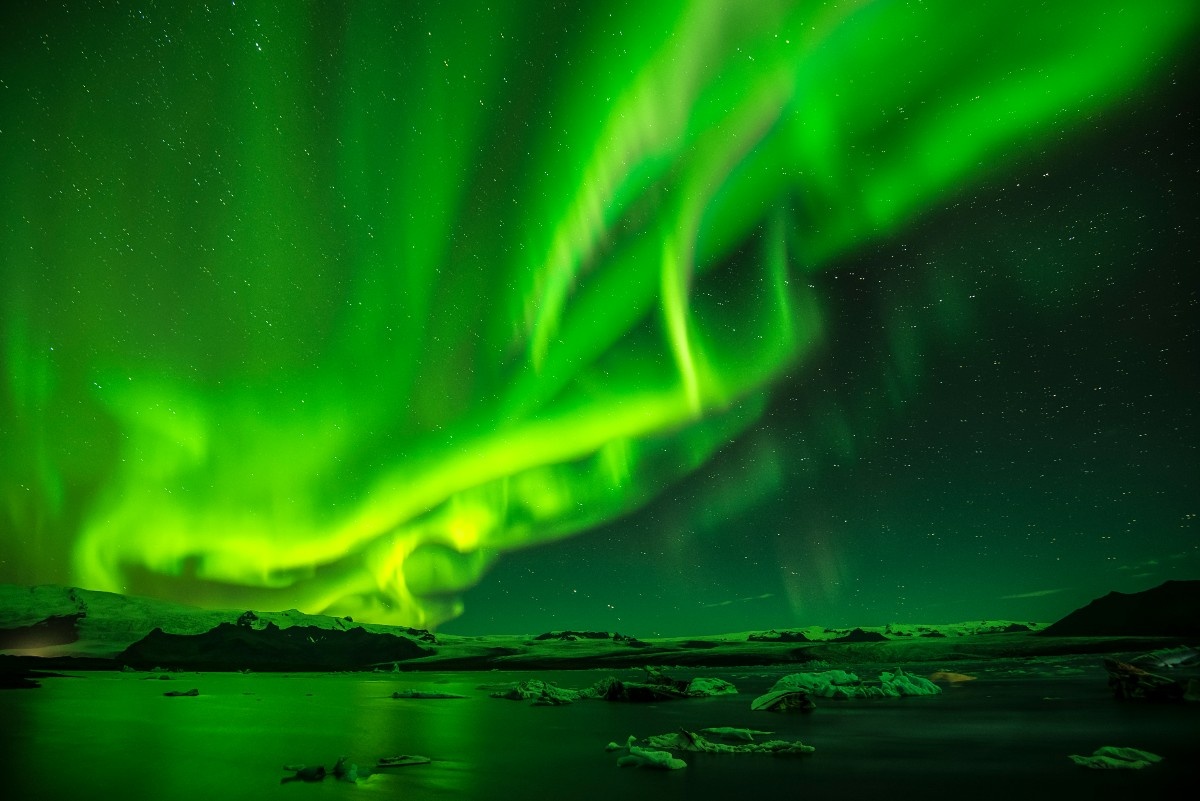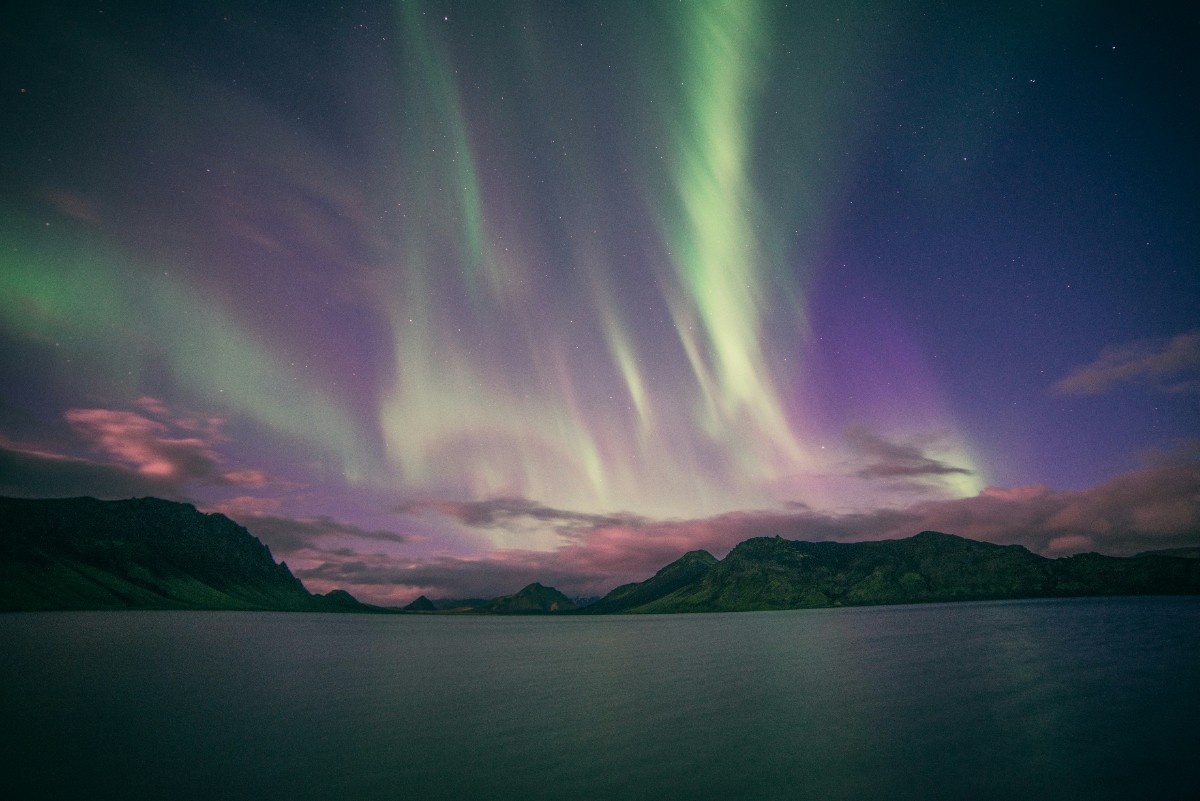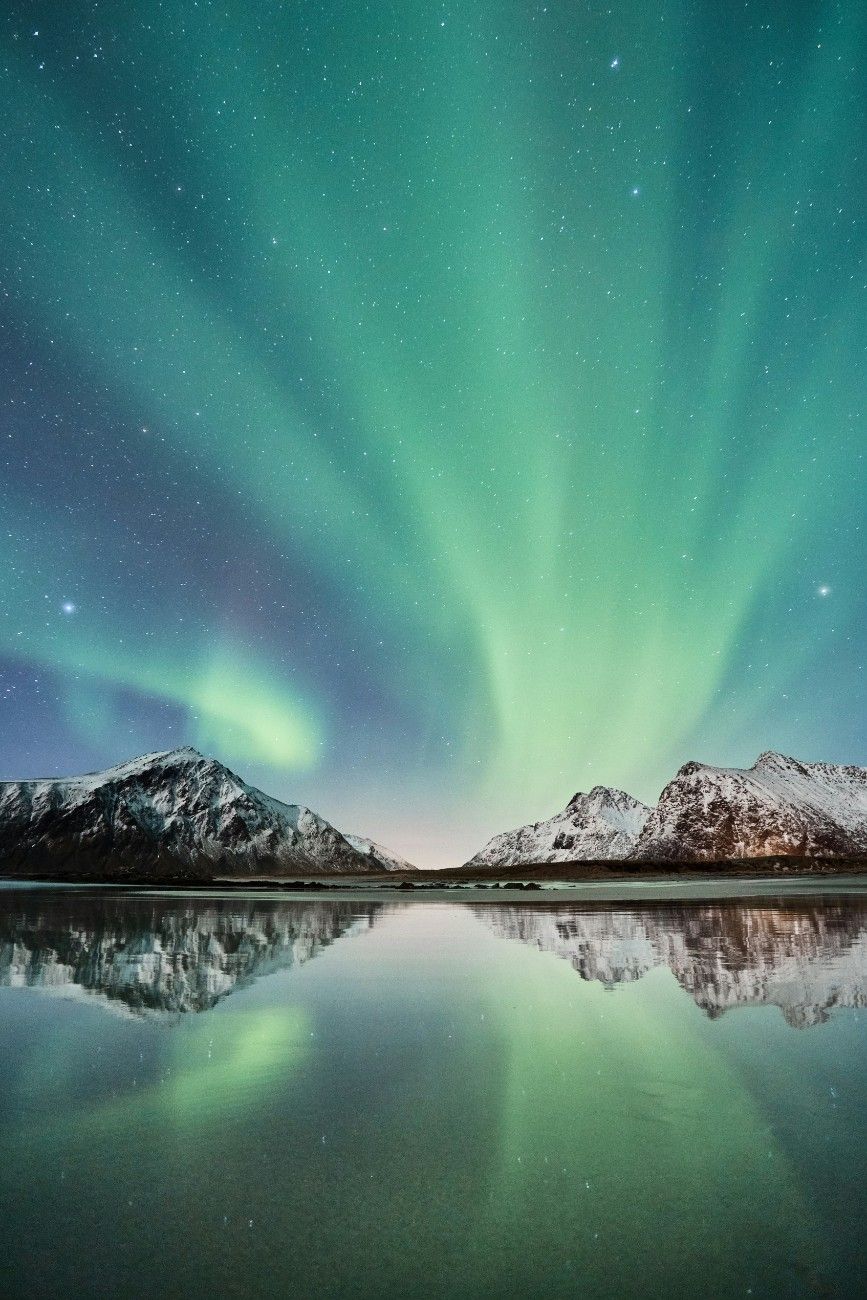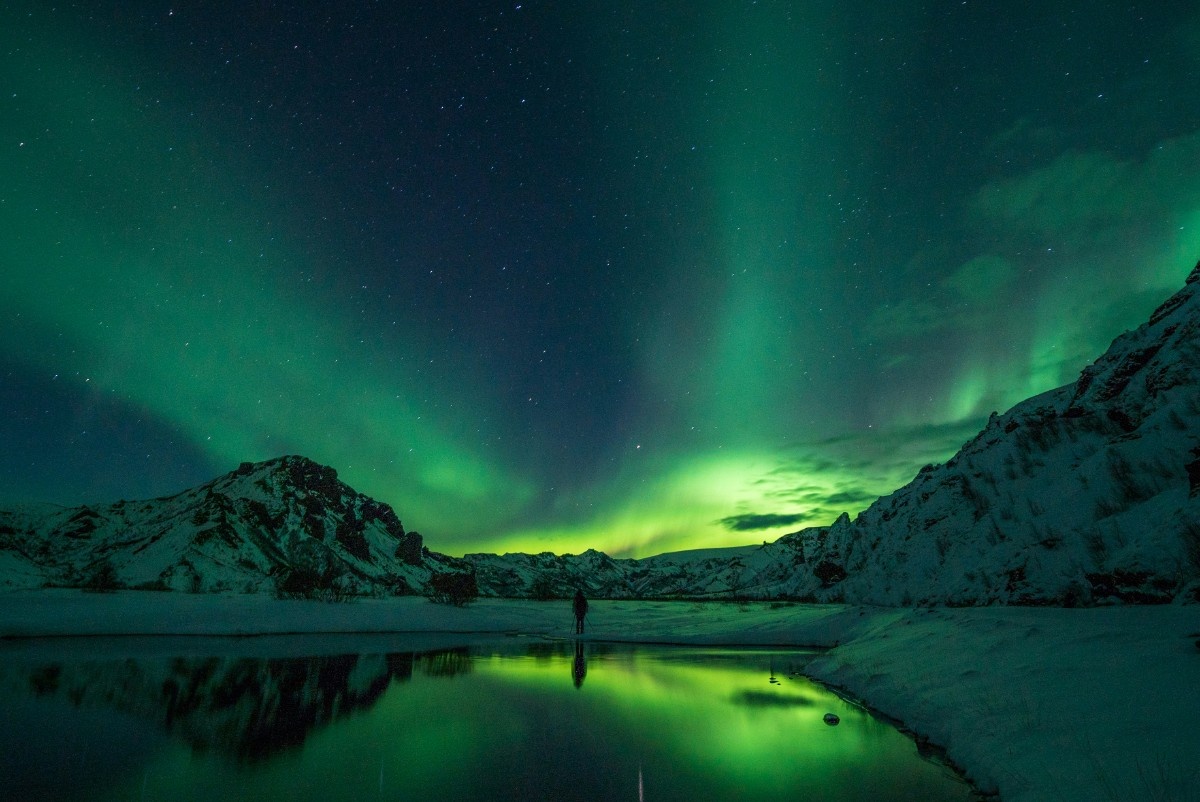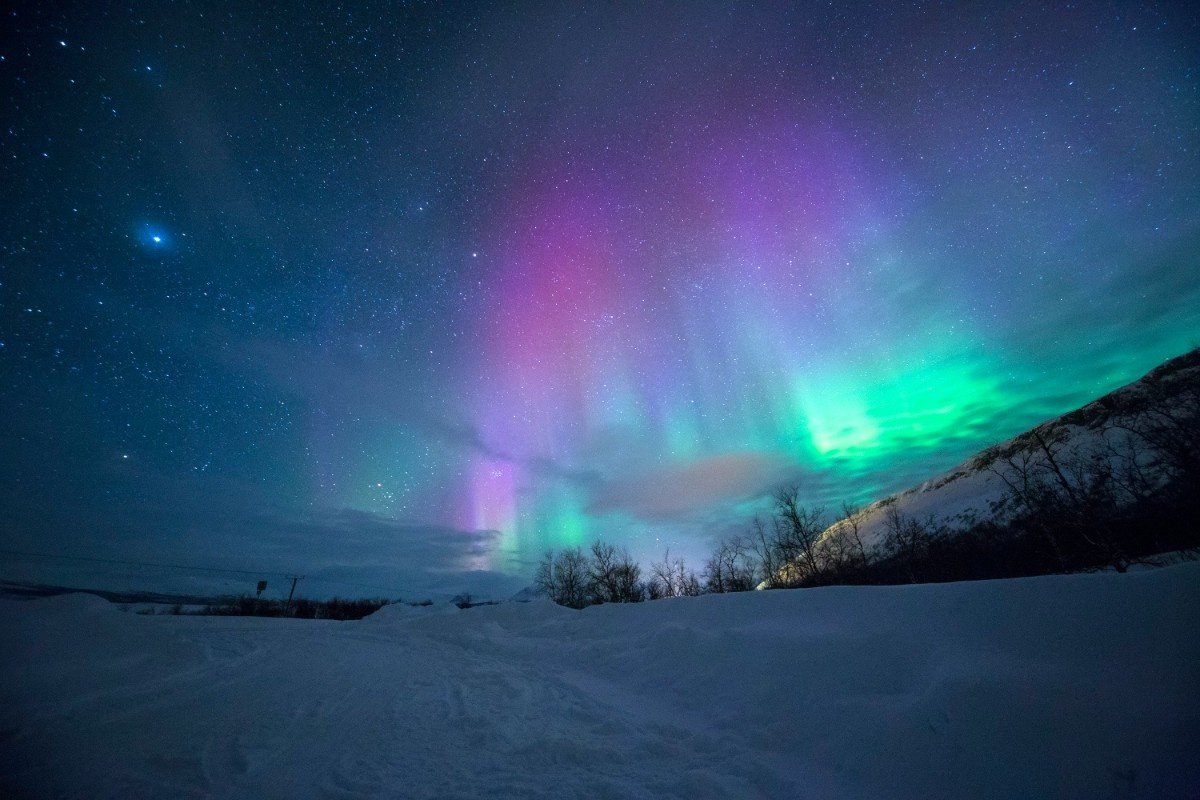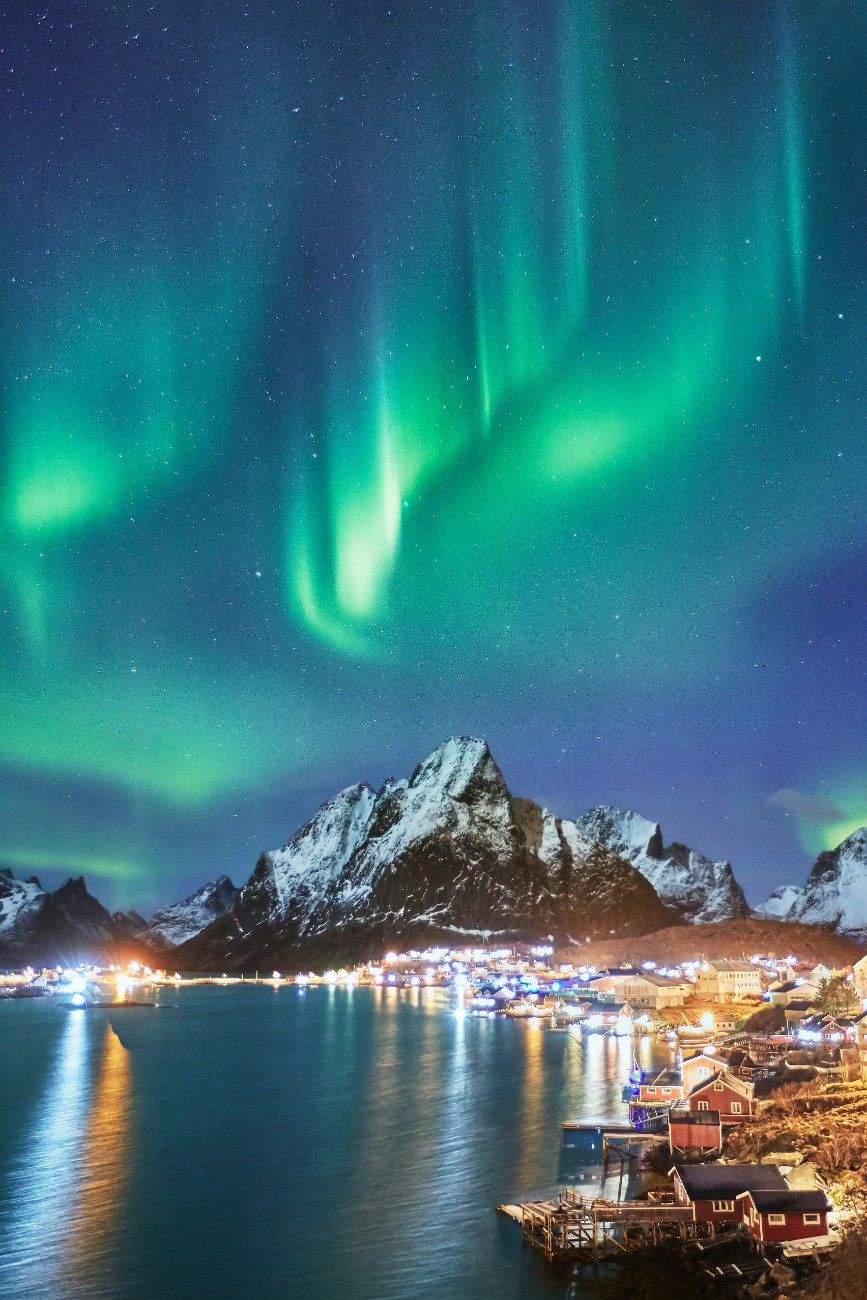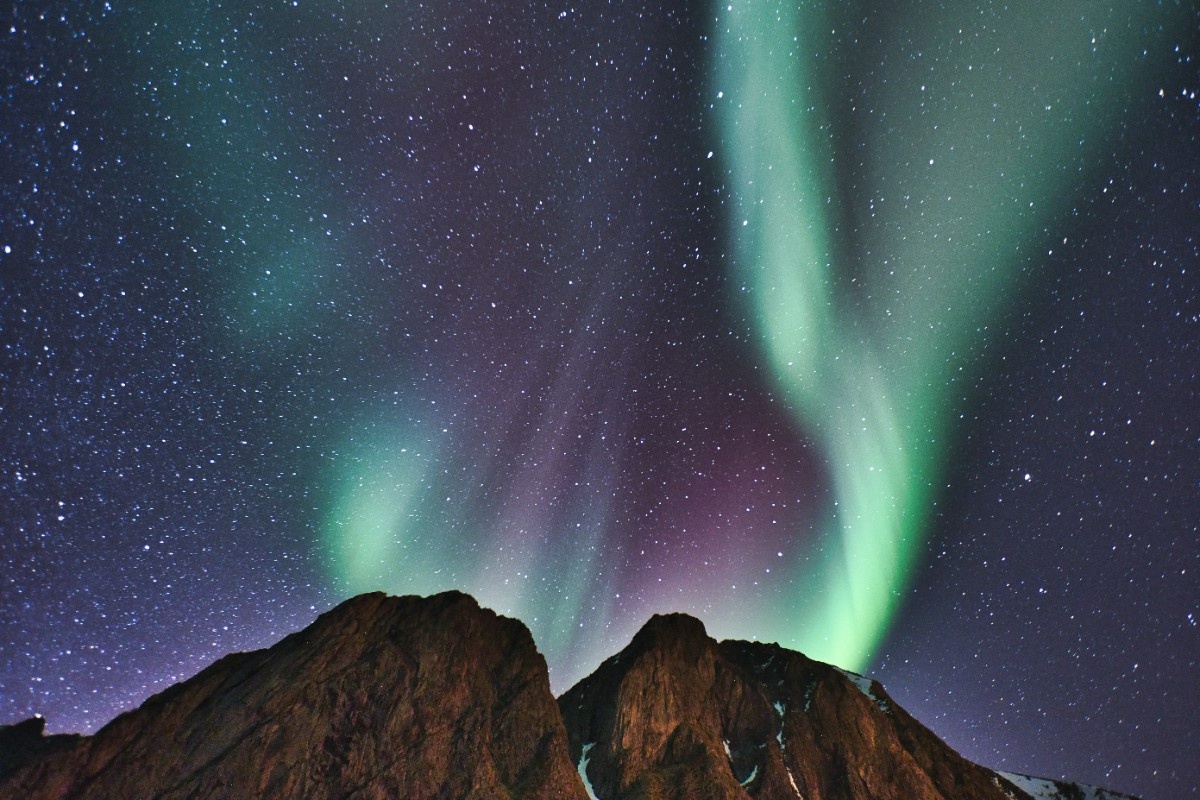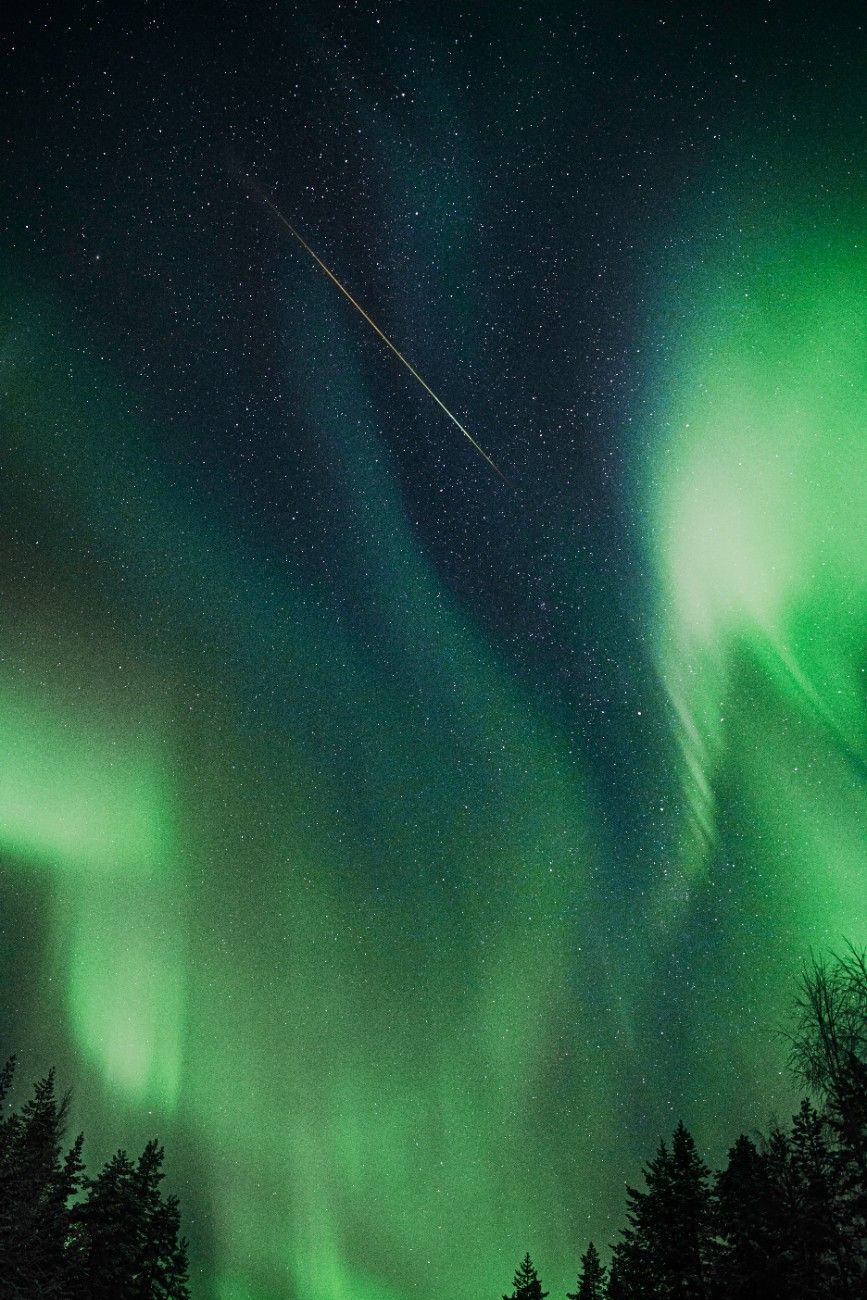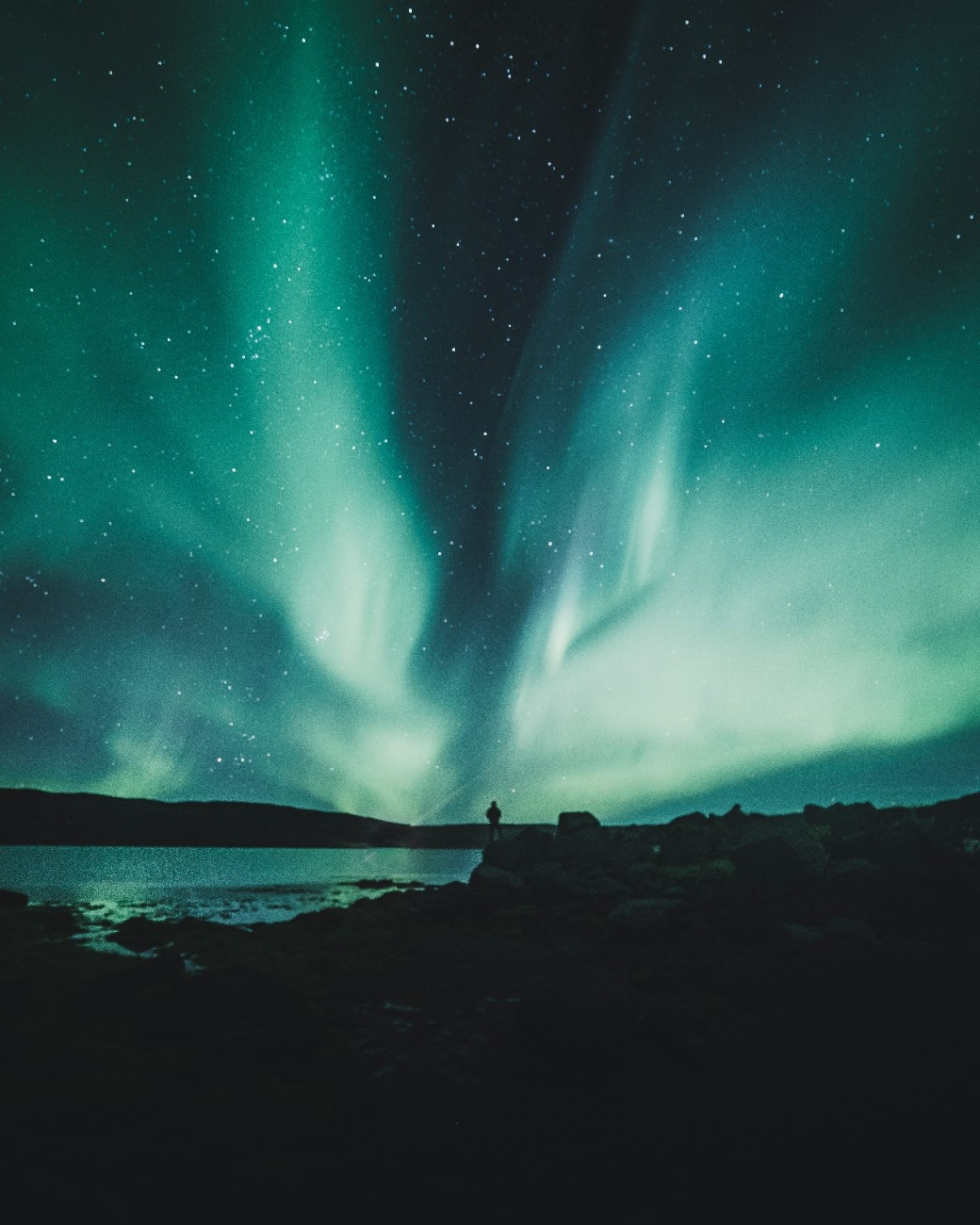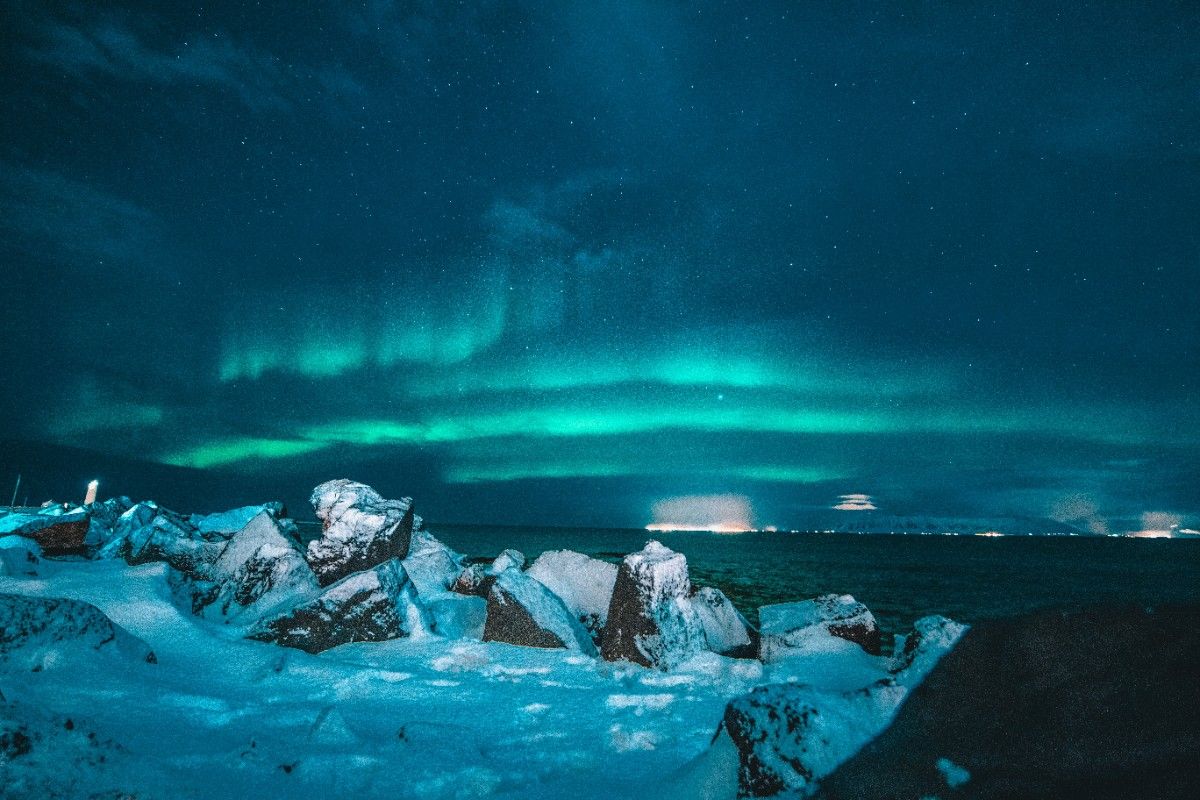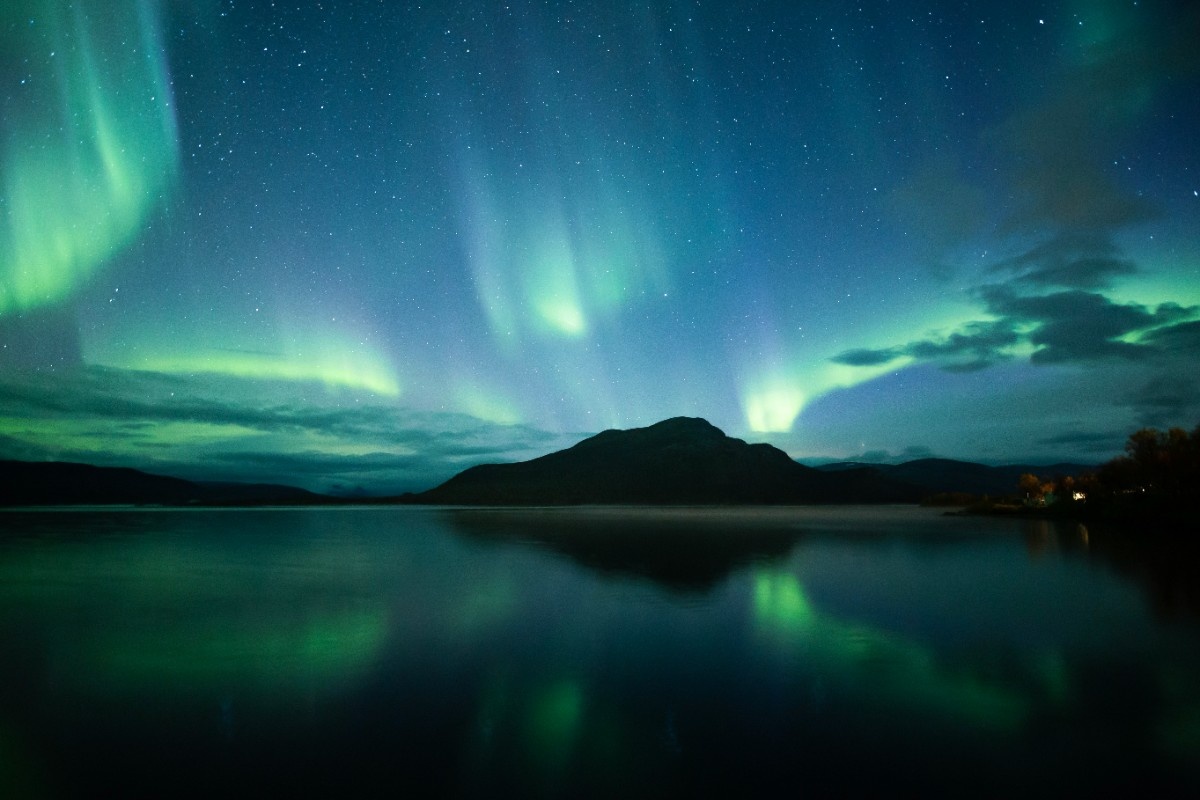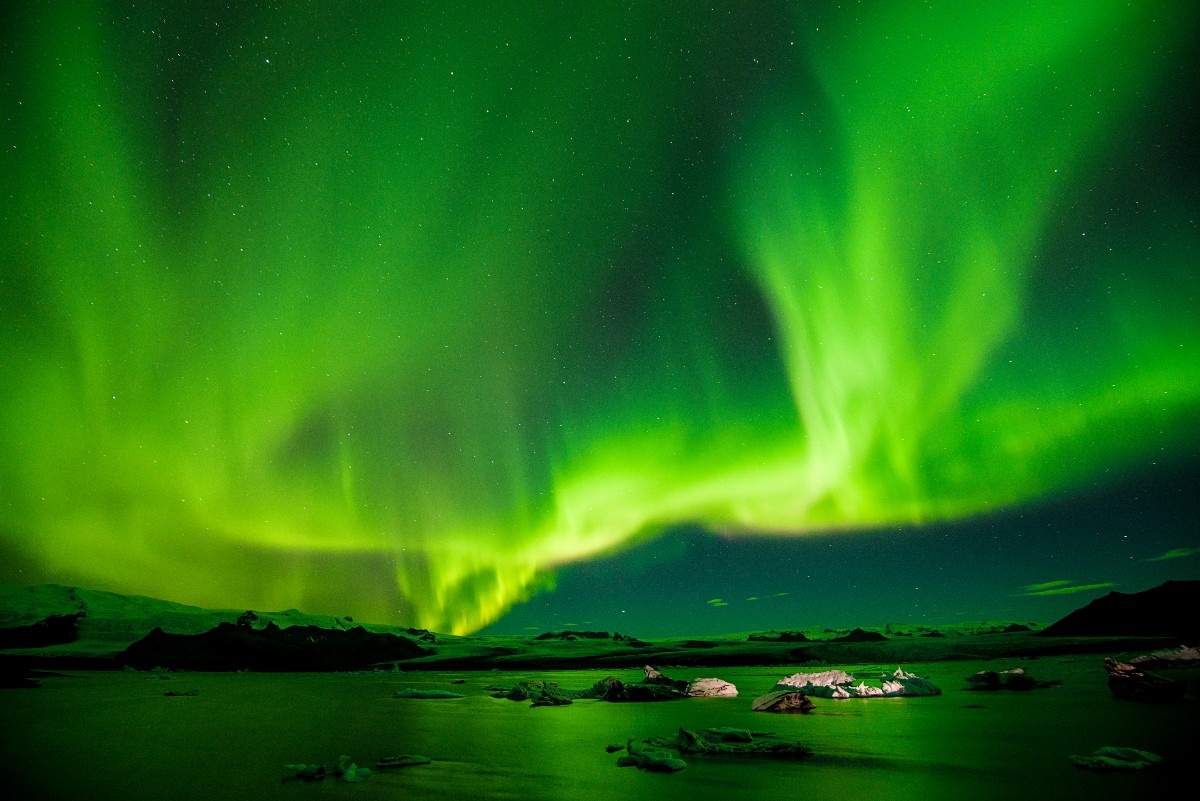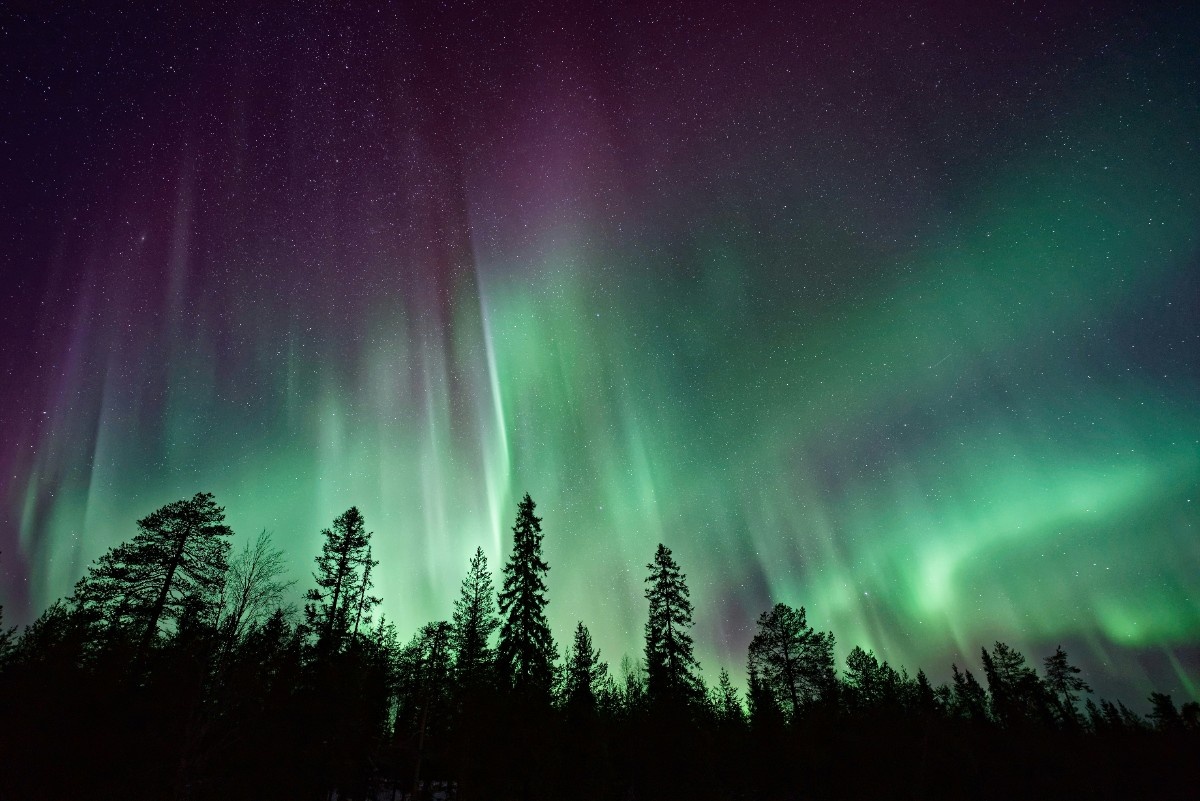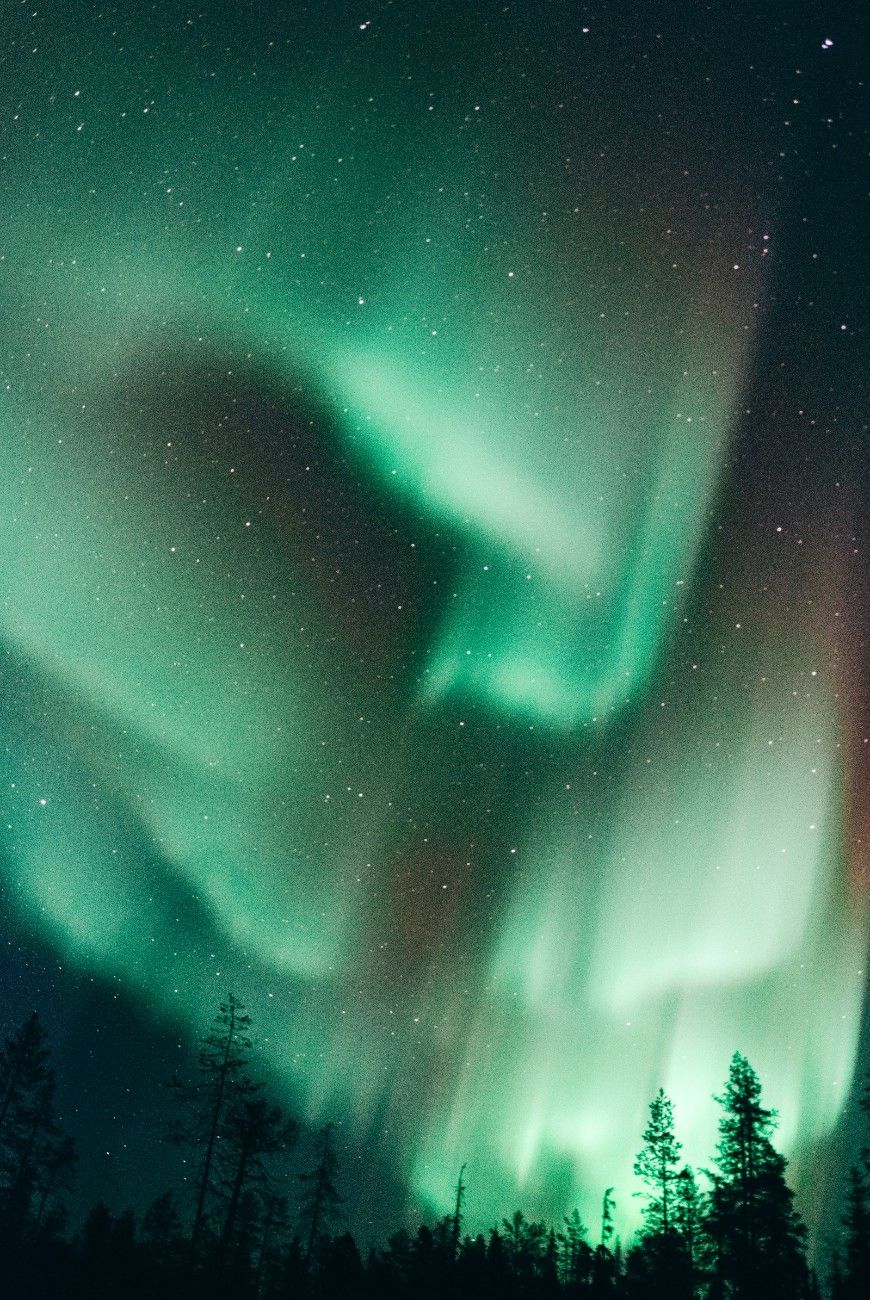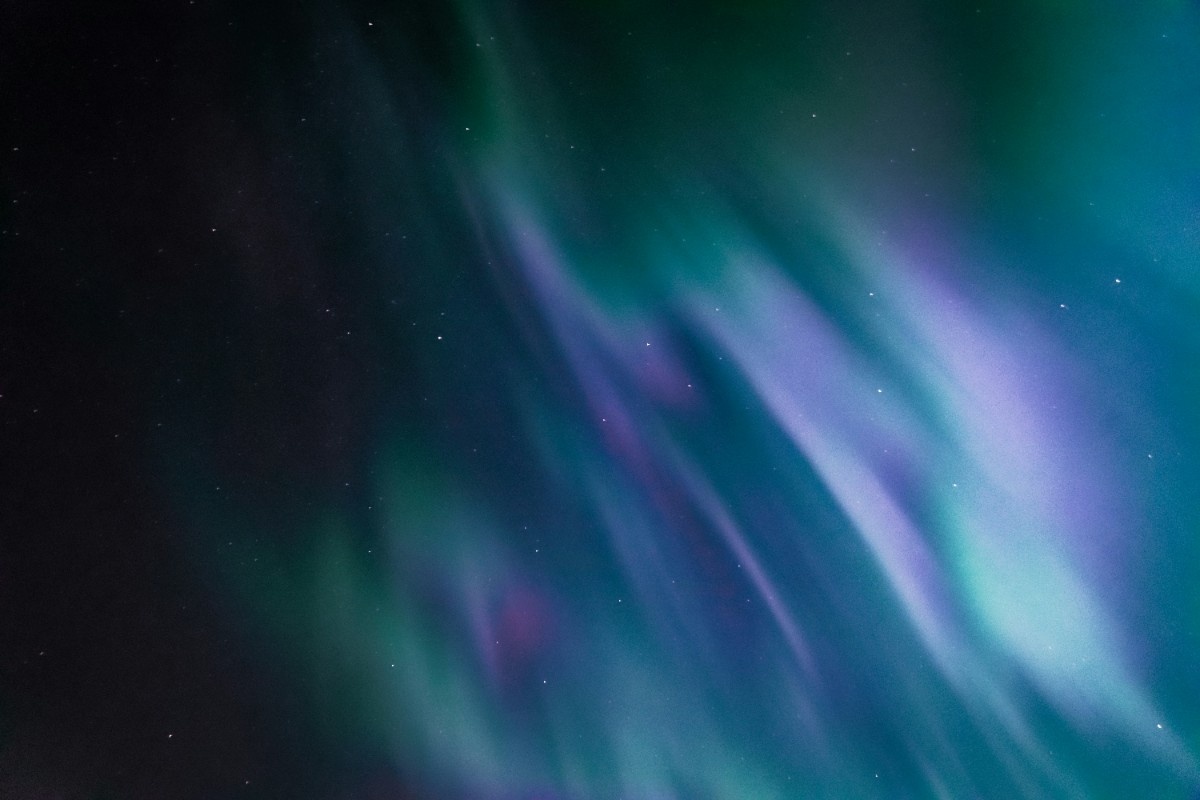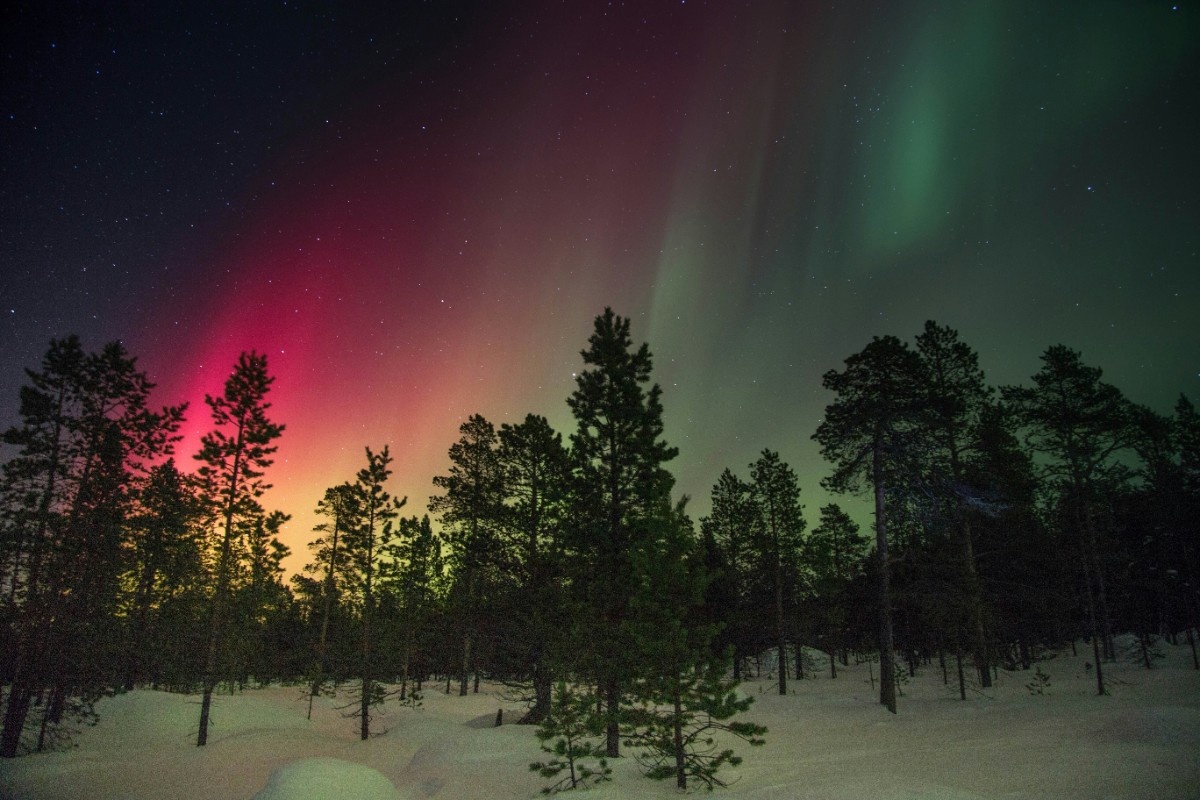Introduction to the Aurora Borealis
What is the Aurora Borealis?
The Aurora Borealis, also known as the Northern Lights, is a breathtaking natural phenomenon that illuminates the night sky with mesmerising displays of colourful light. This awe-inspiring spectacle is visible in the high-latitude regions near the Arctic, such as Iceland, Norway, Finland, Scotland, and Northern Canada. The Aurora Borealis is caused by the interaction between charged particles from the sun and the Earth's magnetic field, resulting in a celestial dance of green, pink, red, and purple hues that captivate observers from around the world.
The Mythology and History of the Aurora Borealis
Throughout history, the Aurora Borealis has been the subject of countless myths, legends, and folklore. In Norse mythology, the Northern Lights were believed to be the reflections of the shields and armour of the Valkyries, the female warriors who guided fallen soldiers to the afterlife. The Sami people of northern Scandinavia believed that the lights were the energies of the souls of the departed. In some Inuit cultures, the Aurora Borealis was seen as a way for the spirits to communicate with the living. These ancient stories and beliefs demonstrate the enduring fascination and cultural significance of the Northern Lights throughout human history.
When and Where to See the Aurora Borealis
The best time to see the Aurora Borealis is typically from late September to early April, when the nights are longer and darker in the Northern Hemisphere. The Aurora Borealis is most frequently observed within the "auroral zone," a ring-shaped area around the Earth's magnetic poles. Iceland, Norway, Finland, and Northern Canada are among the best places to watch the Aurora Borealis, as they are located within this zone and offer clear, dark skies away from light pollution. To increase your chances of witnessing the Northern Lights, it is essential to check the Aurora Borealis forecast, monitor the local weather conditions, and be prepared to stay up late or wake up early to catch the display.
The Science Behind the Aurora Borealis
The Sun's Role in Creating the Aurora Borealis
The Aurora Borealis is ultimately caused by the activity of the sun. The sun constantly emits a stream of charged particles, known as the solar wind, which travels through space at high speeds. When these particles reach the Earth's magnetic field, they interact with the atoms and molecules in the Earth's upper atmosphere, causing them to become excited and release energy in the form of light. The type of solar activity, such as solar storms and coronal mass ejections, can greatly influence the intensity and frequency of Aurora Borealis displays.
The Earth's Magnetic Field and the Aurora Borealis
The Earth's magnetic field plays a crucial role in the formation of the Aurora Borealis. The magnetic field acts as a shield, protecting the planet from the majority of the charged particles emitted by the sun. However, some particles manage to enter the Earth's atmosphere near the magnetic poles, where the field is weaker. As these particles collide with atoms and molecules in the upper atmosphere, they transfer energy and cause the atoms to become excited. When the excited atoms return to their normal state, they release energy in the form of light, creating the magnificent displays of the Northern Lights.
The Colours of the Aurora Borealis
The colours of the Aurora Borealis are determined by the types of atoms and molecules involved in the collisions, as well as the altitude at which these collisions occur. The most common colour of the Northern Lights is green, which is produced by oxygen atoms at lower altitudes (around 60-150 miles above the Earth's surface). Red auroras are created by oxygen atoms at higher altitudes (up to 200 miles) and are less frequently observed. Blue and purple colours are produced by nitrogen molecules and are typically visible at the edges of the aurora displays. The colour diversity of the Aurora Borealis adds to its captivating beauty and mystique.
Studying and Forecasting the Aurora Borealis
Scientists use a variety of methods and instruments to study and predict the occurrence of the Aurora Borealis. Space weather satellites, such as NASA's Advanced Composition Explorer (ACE) and the joint European Space Agency and NASA Solar and Heliospheric Observatory (SOHO), monitor solar activity and provide valuable data on the speed, density, and direction of the solar wind. Ground-based observatories and radar systems, like the Super Dual Auroral Radar Network (SuperDARN), help researchers track the interactions between the solar wind and the Earth's magnetic field. This data is used to create Aurora Borealis forecasts and Aurora Borealis alerts, which help scientists, photographers, and enthusiasts plan their expeditions to witness the Northern Lights. Machine learning algorithms and artificial intelligence are also being developed to improve the accuracy of Aurora Borealis forecasts and further our understanding of this captivating phenomenon.
The Best Places to See the Aurora Borealis
Iceland: The Land of Fire and Ice
Iceland is renowned as one of the best places to see the Aurora Borealis. This stunning island nation, located just below the Arctic Circle, offers a unique combination of natural wonders and optimal conditions for viewing the Northern Lights. With its vast expanses of pristine wilderness, long winter nights, and minimal light pollution, Iceland provides an ideal setting for witnessing the Aurora Borealis.
Some of the best spots to see the Aurora Borealis in Iceland include the Jökulsárlón Glacier Lagoon, where the dancing lights are reflected in the calm waters dotted with icebergs, and the Thingvellir National Park, a UNESCO World Heritage Site known for its clear skies and breathtaking landscapes. Many visitors opt for guided Northern Lights tours, which take them to prime viewing locations and provide expert knowledge on the phenomenon.
Norway: The Birthplace of the Northern Lights Mythology
Norway is another top destination for Aurora Borealis enthusiasts. This Scandinavian country has a rich history and cultural connection to the Northern Lights, as evidenced by the numerous Norse legends and myths surrounding the phenomenon.
The city of Tromsø, located in the heart of the auroral zone, is often referred to as the "Capital of the Arctic" and is one of the best places to watch the Aurora Borealis. Visitors can take part in a variety of activities, such as dog sledding, snowmobiling, and whale watching, while waiting for the Northern Lights to appear in the night sky.
Other notable locations in Norway for Aurora Borealis viewing include the Lofoten Islands, with their picturesque fishing villages and rugged mountain scenery, and the North Cape, the northernmost point of mainland Europe, where the Northern Lights can be seen dancing above the Barents Sea.
Finland: The Enchanting Lapland Region
Finland, particularly its northernmost region of Lapland, is a magical destination for those seeking to experience the Aurora Borealis. This enchanting wilderness is home to vast forests, frozen lakes, and the indigenous Sami people, who have a deep cultural connection to the Northern Lights.
One of the best places to see the Aurora Borealis in Finland is the city of Rovaniemi, the official hometown of Santa Claus. Here, visitors can stay in glass igloos, providing a unique opportunity to watch the Northern Lights from the comfort of their beds. The nearby Pyhä-Luosto National Park offers excellent opportunities for Aurora Borealis viewing, with its clear skies and minimal light pollution.
Other top locations in Finnish Lapland include the Inari Lake region, home to the Sami cultural centre and the Aurora Borealis Observatory, and the Saariselkä ski resort, which offers a range of winter activities and Aurora Borealis expeditions.
Canada: The Vast Northern Territories
Canada, with its expansive northern territories, is a prime destination for Aurora Borealis viewing. The country's sparse population, pristine wilderness, and long winter nights create optimal conditions for witnessing the Northern Lights.
The city of Whitehorse, located in the Yukon Territory, is known as the "Aurora Capital of North America" and is one of the best places to watch the Aurora Borealis in Canada. Visitors can take part in guided tours, stay in remote lodges, or even embark on a flightseeing trip to view the Northern Lights from above.
Other notable locations in Canada for Aurora Borealis viewing include the Northwest Territories, home to the world-renowned Yellowknife Aurora Borealis viewing region, and the Churchill region in Manitoba, where visitors can combine Northern Lights viewing with polar bear watching and dog sledding adventures.
The Cultural Significance of the Aurora Borealis
Norse Mythology: The Valkyries and Bifrost Bridge
In Norse mythology, the Aurora Borealis held a significant place in the beliefs and legends of the Scandinavian people. The Northern Lights were associated with the Valkyries, the female warrior spirits who served Odin, the king of the gods. According to legend, the Valkyries rode through the sky on horseback, their armour reflecting the light of the moon and creating the shimmering colours of the Aurora Borealis.
Another Norse myth connects the Northern Lights to the Bifrost Bridge, a burning rainbow bridge that linked Midgard (Earth) to Asgard, the realm of the gods. The Bifrost Bridge was said to be guarded by Heimdallr, the watchman of the gods, and the Aurora Borealis was believed to be a reflection of the bridge's luminous colours.
Inuit Folklore: The Spirits of the Ancestors
In Inuit folklore, the Aurora Borealis is often associated with the spirits of the ancestors. The Inuit people of Greenland, Canada, and Alaska have various legends and stories that explain the origin and significance of the Northern Lights.
One common belief is that the Aurora Borealis represents the spirits of the deceased, dancing and playing ball in the sky. The Inuit also believed that the lights were a way for the spirits to communicate with the living, and they would often whistle or sing to the Northern Lights to encourage them to come closer.
In some Inuit communities, the Aurora Borealis was seen as a guiding light for shamans and healers, helping them navigate the spirit world and communicate with the ancestors.
Sami Culture: The Importance of the Northern Lights
For the Sami people, the indigenous inhabitants of the northern regions of Scandinavia, the Aurora Borealis holds a special place in their culture and traditions. The Sami have lived in harmony with the harsh Arctic environment for thousands of years, and the Northern Lights have been an integral part of their lives and beliefs.
In Sami folklore, the Aurora Borealis is often associated with the spirits of the departed. The Sami believed that the lights were the souls of the deceased, traveling to the afterlife or visiting their loved ones on Earth. Some Sami legends also connect the Northern Lights to the "Sami Trail," a celestial path that guides the souls of the dead to the spirit world.
The Aurora Borealis also plays a role in Sami shamanic practices. Sami shamans, known as noaidi, would use the Northern Lights as a source of spiritual guidance and power, often invoking the lights during healing ceremonies and rituals.
Modern Cultural Significance and Tourism
In modern times, the Aurora Borealis has gained global recognition as a natural wonder and a sought-after travel experience. The Northern Lights have become a significant driver of tourism in countries such as Iceland, Norway, Finland, and Canada, with countless visitors flocking to these destinations each year to witness the mesmerising displays.
The Aurora Borealis has also inspired countless works of art, literature, and music, cementing its place in popular culture. From the paintings of the Norwegian artist Harald Sohlberg to the ethereal compositions of the Finnish composer Jean Sibelius, the Northern Lights have served as a muse for creatives across various disciplines.
In recent years, the Aurora Borealis has also gained attention as a symbol of environmental awareness and the need to protect the planet's fragile ecosystems. As climate change and light pollution continue to impact the visibility and frequency of the Northern Lights, many organisations and individuals have advocated for the preservation of dark skies and the reduction of greenhouse gas emissions to ensure that future generations can continue to marvel at this awe-inspiring phenomenon.
Photographing the Aurora Borealis
Essential Equipment for Aurora Borealis Photography
To capture stunning images of the Aurora Borealis, having the right equipment is crucial. A digital camera with manual settings and a high ISO capability is essential for low-light photography. A wide-angle lens with a fast aperture (f/2.8 or wider) is ideal for capturing the expansive night sky and the Northern Lights.
A sturdy tripod is another must-have piece of equipment, as it helps to keep the camera stable during long exposures. Remote shutter releases or intervalometers are also useful for minimising camera shake and capturing time-lapse sequences of the Aurora Borealis.
When photographing in cold environments, it's essential to protect your camera gear from the elements. Invest in a quality camera bag, lens hoods, and weather-resistant covers to shield your equipment from snow, wind, and moisture.
Camera Settings for Aurora Borealis Photography
To successfully photograph the Aurora Borealis, it's crucial to understand how to adjust your camera settings for low-light conditions. Start by setting your camera to manual mode, which allows you to control the aperture, shutter speed, and ISO independently.
For aperture, choose the widest setting available on your lens (f/2.8 or lower) to allow the maximum amount of light to reach the sensor. Shutter speed will depend on the intensity of the Northern Lights and the desired effect, but a good starting point is between 5 and 15 seconds. Adjust the ISO to achieve the desired brightness while minimising noise; a range of 800 to 3200 is typically suitable for Aurora Borealis photography.
Focus your lens manually on a distant light source or star to ensure sharpness, as autofocus may struggle in low-light conditions. Experiment with different white balance settings, such as daylight or tungsten, to capture the true colours of the Aurora Borealis.
Composition Techniques for Aurora Borealis Photography
Composing striking images of the Aurora Borealis involves more than just pointing your camera at the sky. Incorporating interesting foreground elements, such as mountains, trees, or water, can add depth and context to your photographs.
Pay attention to the direction and movement of the Northern Lights, and try to frame your shots to emphasise their dynamic nature. Use the rule of thirds to create balanced and visually appealing compositions, placing the horizon and key elements along the grid lines.
Experimenting with different perspectives, such as shooting from a low angle or including reflections in a lake or river, can add variety and interest to your Aurora Borealis photographs.
Post-Processing Aurora Borealis Photographs
While capturing the Aurora Borealis in-camera is essential, post-processing your images can help to bring out their full potential. Start by adjusting the white balance to ensure accurate colour representation, and then fine-tune the exposure, contrast, and saturation to enhance the vibrancy of the Northern Lights.
Noise reduction and sharpening tools can help to minimise high ISO noise and improve the overall clarity of your images. When processing Aurora Borealis photographs, be careful not to overdo the adjustments, as this can result in an unnatural or artificial appearance.
Consider creating panoramic images or time-lapse sequences to showcase the scale and movement of the Aurora Borealis. Many post-processing software options, such as Adobe Lightroom and Photoshop, offer tools specifically designed for stitching together multiple images and creating time-lapse videos.
The Science of Forecasting the Aurora Borealis
The Role of Solar Activity in Aurora Borealis Forecasting
Forecasting the Aurora Borealis relies heavily on understanding and monitoring solar activity. The sun undergoes an 11-year cycle, during which the number of sunspots, solar storms, and coronal mass ejections (CMEs) fluctuates. These events release charged particles into space, which travel towards Earth and interact with its magnetic field, causing the Aurora Borealis.
Scientists use various instruments, such as the Solar Dynamics Observatory (SDO) and the Solar and Heliospheric Observatory (SOHO), to monitor the sun's activity and detect potential solar storms or CMEs that may trigger Aurora Borealis displays. By analysing this data, researchers can provide Aurora Borealis forecasts and alert the public to the likelihood of seeing the Northern Lights.
Monitoring Earth's Magnetic Field for Aurora Borealis Forecasting
In addition to solar activity, the Earth's magnetic field plays a crucial role in the formation and visibility of the Aurora Borealis. Scientists use a network of ground-based magnetometers to measure fluctuations in the Earth's magnetic field, which can indicate the presence of charged particles entering the atmosphere.
The Kp-index, a scale ranging from 0 to 9, is used to quantify the disturbance in the Earth's magnetic field and predict the likelihood of Aurora Borealis sightings. Higher Kp values indicate a greater probability of visible Northern Lights, with values of 5 or more considered to be good indicators of significant Aurora Borealis activity.
Aurora Borealis Forecast Models and Tools
Scientists have developed various models and tools to help predict the occurrence and intensity of the Aurora Borealis. The OVATION Prime model, developed by the National Oceanic and Atmospheric Administration (NOAA), uses real-time solar wind data to create short-term forecasts of Aurora Borealis activity.
Websites like Spaceweather.com and services like the Aurora Borealis Forecast from the University of Alaska Fairbanks provide regularly updated information on solar activity, geomagnetic disturbances, and the probability of seeing the Northern Lights in different locations.
Mobile apps, such as My Aurora Borealis Forecast and Aurora Borealis Alerts, offer personalised Northern Lights predictions based on the user's location and real-time solar and geomagnetic data.
Challenges and Limitations in Aurora Borealis Forecasting
Despite advances in technology and understanding of the factors that influence the Aurora Borealis, forecasting the Northern Lights remains an inexact science. The complex interactions between the sun, the Earth's magnetic field, and the atmosphere make it challenging to predict the timing, location, and intensity of Aurora Borealis displays with high accuracy.
Short-term forecasts, typically up to a few days in advance, are more reliable than long-term predictions. However, even short-term forecasts can be affected by sudden changes in solar activity or unforeseen geomagnetic disturbances.
Additionally, local weather conditions, such as cloud cover or precipitation, can significantly impact the visibility of the Aurora Borealis, even when the forecast indicates a high probability of activity.
Despite these challenges, Aurora Borealis forecasting continues to improve as researchers develop more sophisticated models and instruments for monitoring solar activity and geomagnetic disturbances. As our understanding of the complex processes behind the Northern Lights grows, so too will our ability to predict and witness this awe-inspiring natural phenomenon.
The Impact of Solar Storms on the Aurora Borealis
How Solar Storms Affect the Aurora Borealis
Solar storms, such as solar flares and coronal mass ejections (CMEs), have a significant impact on the Aurora Borealis. These events release enormous amounts of charged particles into space, which travel towards Earth at high speeds. When these particles interact with Earth's magnetic field, they can cause geomagnetic disturbances and intensify the Northern Lights.
During powerful solar storms, the Aurora Borealis can become more intense and visible at lower latitudes than usual. In some cases, the Northern Lights may be seen as far south as the United States or even central Europe, a rare and stunning sight for those living outside the typical auroral zone.
However, the effects of solar storms on the Aurora Borealis can be unpredictable, as the intensity and duration of the resulting geomagnetic disturbances depend on factors such as the speed, density, and magnetic field orientation of the incoming solar particles.
The Impact of Solar Storms on Technology and Infrastructure
While solar storms can create breathtaking displays of the Aurora Borealis, they can also have detrimental effects on technology and infrastructure. The charged particles and electromagnetic radiation released during solar flares and CMEs can interfere with satellite communications, GPS navigation, and power grids.
During severe solar storms, satellites may experience malfunctions or even permanent damage due to the increased radiation exposure. This can disrupt global communication networks, weather forecasting, and military operations that rely on satellite technology.
Solar storms can also induce geomagnetically induced currents (GICs) in power lines, transformers, and pipelines, potentially causing widespread power outages and damage to electrical infrastructure. In March 1989, a powerful solar storm caused a geomagnetic disturbance that triggered the collapse of the Hydro-Québec power grid in Canada, leaving millions of people without electricity for hours.
Monitoring and Mitigating the Effects of Solar Storms
To minimise the potential impacts of solar storms on technology and infrastructure, scientists and government agencies continuously monitor solar activity and space weather conditions. Organisations such as NASA, NOAA, and the European Space Agency (ESA) use a network of ground-based and space-based observatories to detect and track solar storms and provide timely warnings to industries and the public.
Satellite operators and power grid managers use this information to implement protective measures, such as adjusting satellite orbits, disconnecting vulnerable equipment, or redistributing power loads to minimise the risk of damage or disruption.
Research into improving the resilience of technology and infrastructure to the effects of solar storms is ongoing, with the development of more robust satellite designs, better shielding for electrical systems, and advanced materials that can withstand high levels of radiation and electromagnetic interference.
The Role of Solar Storms in Aurora Borealis Tourism
While solar storms can pose challenges for technology and infrastructure, they also create opportunities for Aurora Borealis tourism. The increased intensity and frequency of the Northern Lights during solar storm events can attract more visitors to popular Aurora Borealis viewing destinations, such as Iceland, Norway, Finland, and Canada.
Many tour operators and hotels in these regions offer specialised Aurora Borealis viewing packages and alerts, allowing tourists to maximise their chances of witnessing the Northern Lights during solar storm periods. Some companies even provide "Aurora Borealis chaser" services, where experts guide visitors to the best locations for viewing the Aurora Borealis based on real-time solar activity and geomagnetic data.
However, the unpredictable nature of solar storms and their effects on the Aurora Borealis can also lead to disappointment for tourists who travel long distances to see the Northern Lights but encounter unfavourable weather conditions or weaker-than-expected displays.
As solar storm forecasting and Aurora Borealis prediction methods continue to improve, the Aurora Borealis tourism industry may become better equipped to manage visitor expectations and provide more reliable Northern Lights experiences, even during periods of high solar activity.
The Future of Aurora Borealis Research and Tourism
Advancements in Aurora Borealis Science and Forecasting
The future of Aurora Borealis research is poised for exciting advancements, driven by the development of new technologies, improved scientific understanding, and increased international collaboration. As our knowledge of the complex interactions between the sun, Earth's magnetic field, and the atmosphere continues to grow, so too will our ability to predict and study the Northern Lights.
Upcoming missions, such as NASA's Geospace Dynamics Constellation (GDC) and the European Space Agency's Lagrange mission, will provide unprecedented insights into the dynamics of Earth's magnetosphere and the effects of solar activity on the Aurora Borealis. These missions will employ advanced instruments and satellites to collect high-resolution data on geomagnetic disturbances and charged particle flows, enabling more accurate and detailed forecasting of Aurora Borealis events.
Advances in machine learning and artificial intelligence will also play a significant role in the future of Aurora Borealis research, allowing scientists to analyse vast amounts of data more efficiently and identify patterns and relationships that may have previously gone unnoticed. This could lead to the development of more sophisticated Aurora Borealis prediction models, capable of providing longer-range and more localised forecasts of Northern Lights activity.
Innovations in Aurora Borealis Tourism and Viewing Experiences
As the popularity of Aurora Borealis tourism continues to grow, the industry is likely to see a range of innovations and unique viewing experiences. From luxury glass igloos and Aurora Borealis viewing pods to virtual reality and augmented reality tours, technology will play an increasingly important role in enhancing the Northern Lights experience for visitors.
Sustainable and eco-friendly Aurora Borealis tourism practices are also expected to gain prominence, as travellers become more conscious of their environmental impact. This may involve the use of renewable energy sources, low-emission transportation, and the development of low-impact viewing infrastructure that minimises disturbance to fragile Arctic ecosystems.
The integration of Aurora Borealis tourism with other Arctic experiences, such as wildlife watching, cultural immersion, and adventure activities, could create more diverse and engaging itineraries for visitors, encouraging longer stays and repeat visits to Northern Lights destinations.
Challenges and Opportunities for Aurora Borealis Research and Tourism
Despite the exciting prospects for the future of Aurora Borealis research and tourism, there are also challenges and uncertainties that must be addressed. Climate change and the potential impacts on Arctic weather patterns and ecosystems could affect the visibility and predictability of the Northern Lights, as well as the sustainability of Aurora Borealis tourism in certain regions.
Light pollution from growing urban areas and industrial development in the Arctic may also pose a threat to the quality of Aurora Borealis viewing experiences, necessitating the implementation of dark sky preservation policies and the establishment of protected areas for Northern Lights observation.
Balancing the economic benefits of Aurora Borealis tourism with the need to protect the cultural heritage and traditional livelihoods of indigenous Arctic communities will also be an ongoing challenge, requiring close collaboration and consultation between the tourism industry, local communities, and government agencies.
However, these challenges also present opportunities for innovation, collaboration, and sustainable development in Aurora Borealis research and tourism. By fostering partnerships between scientists, tourism operators, local communities, and policymakers, it may be possible to create a more resilient, responsible, and rewarding future for the study and appreciation of the Northern Lights.
As our fascination with the Aurora Borealis continues to grow, so too will the importance of preserving and understanding this awe-inspiring natural phenomenon for generations to come. Through advances in research, responsible tourism practices, and a shared commitment to the wonder and beauty of the Northern Lights, we can ensure that the future of Aurora Borealis research and tourism is as bright and inspiring as the lights themselves.
Related Articles

Let us know you agree to cookies
We use marketing, analytical and functional cookies as well as similar technologies to give you the best experience. Third parties, including social media platforms, often place tracking cookies on our site to show you personalised adverts outside of our website.
We store your cookie preferences for two years and you can edit your preferences via ‘manage cookies’ or through the cookie policy at the bottom of every page. For more information, please see our cookie policy.
